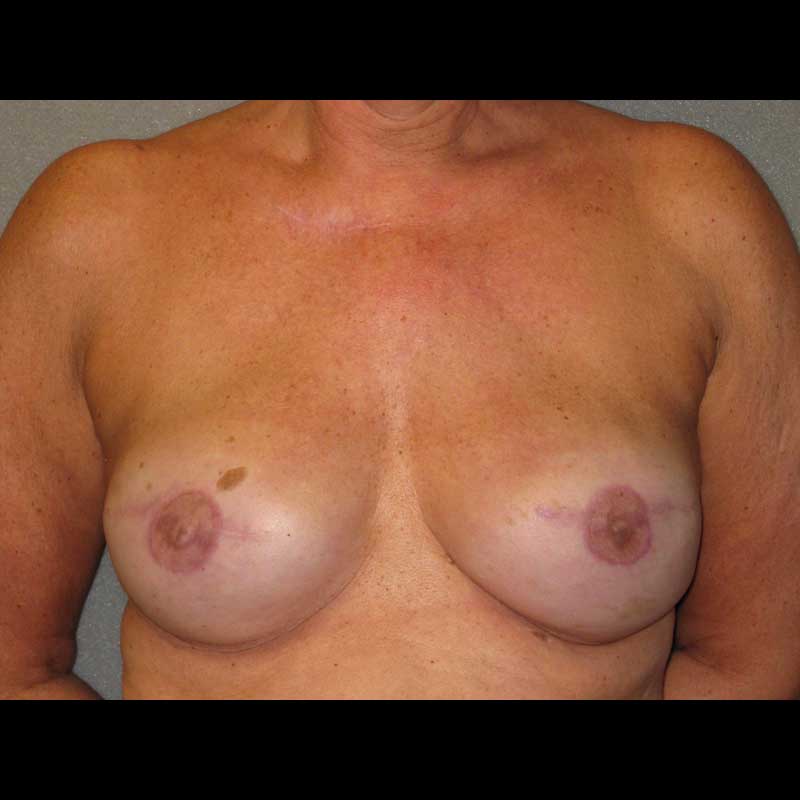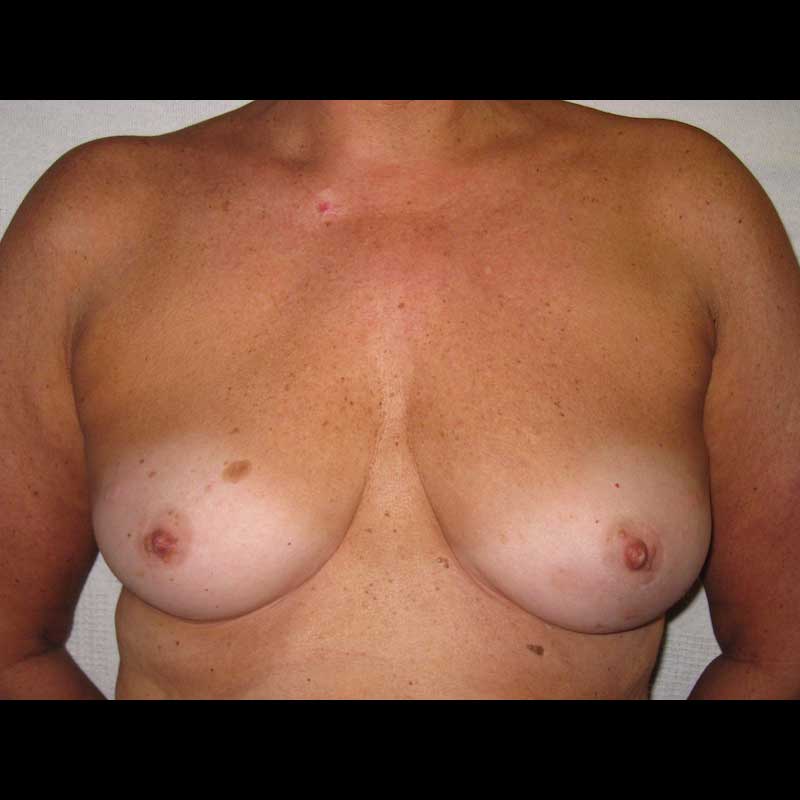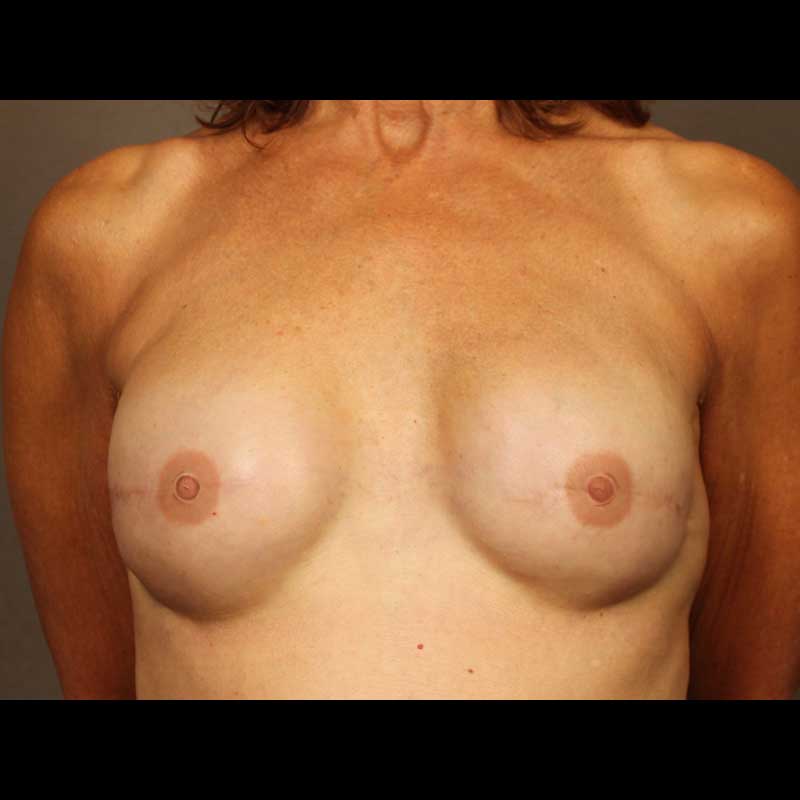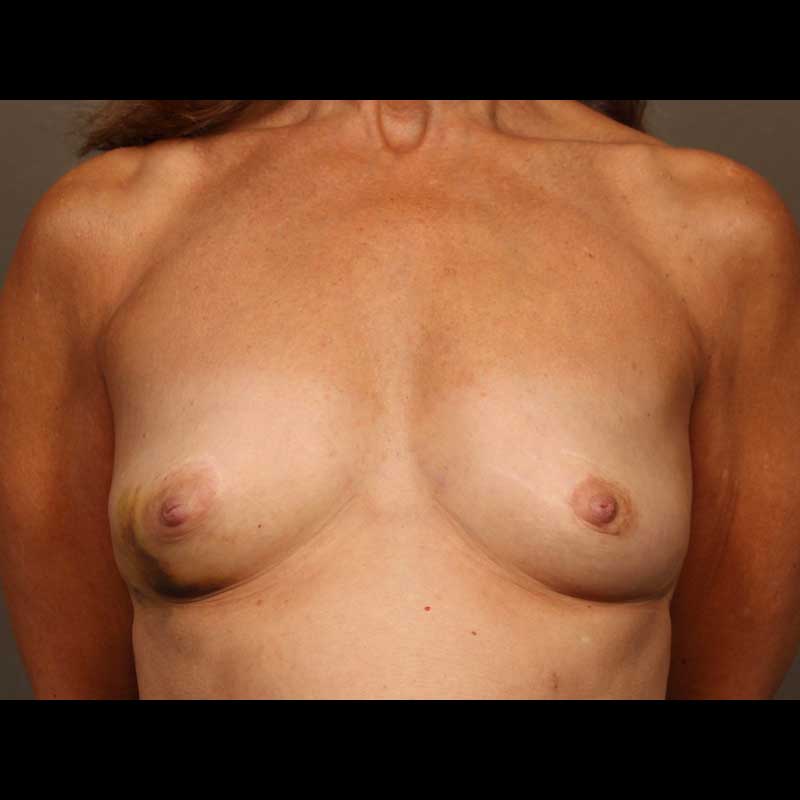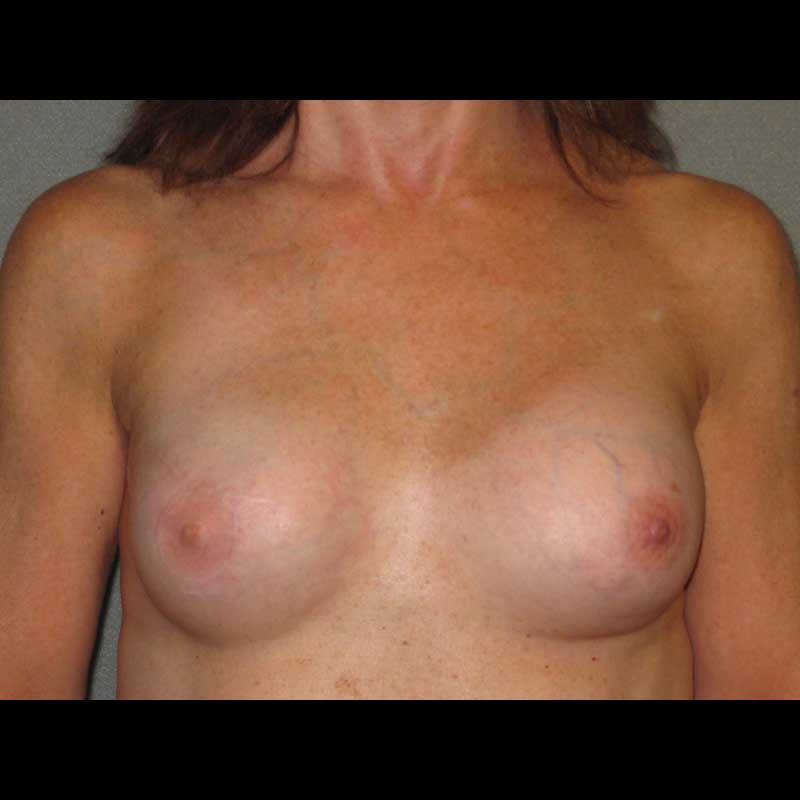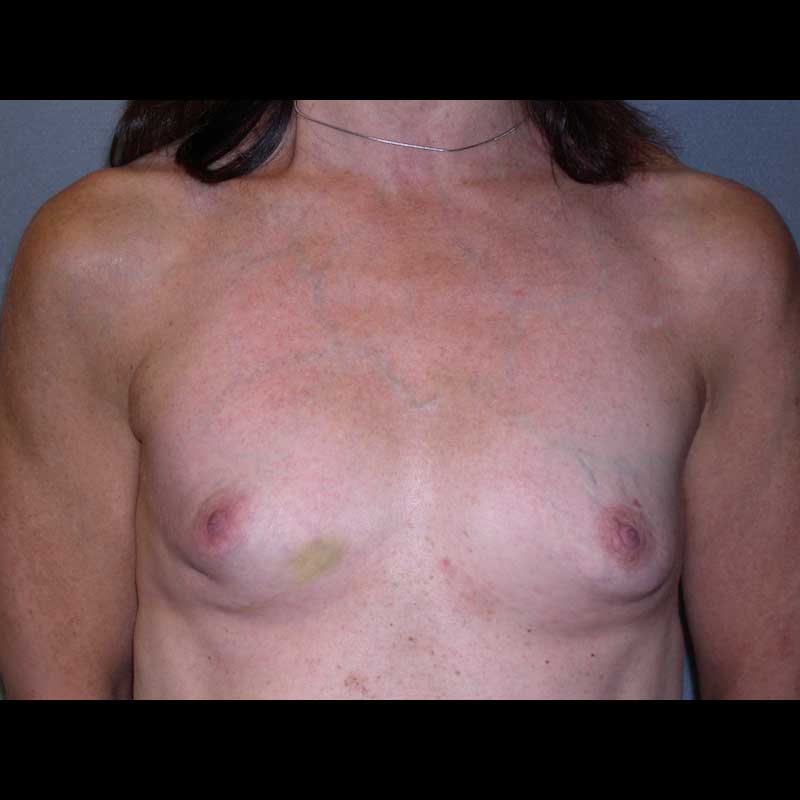Summary
Expander implant exchange and revision is the second stage of expander implant reconstruction. This approach uses a tissue expander—placed at the time of mastectomy—to gently create space for a suitable, permanent implant. Once the tissue expansion process is complete, you and your surgeon can plan the expander implant exchange, which allows us to place a final implant and improve breast contour.
When planning your surgery, our team will help you determine which type of breast implant is best for you based on factors including your size preference, chest wall measurements, and quality of healed tissue. We will also coordinate this procedure with treatments like radiation and chemotherapy to ensure appropriate timing.
Expander implant exchange is generally performed as an outpatient procedure. Our surgeons remove the tissue expander and make changes to the implant pocket as needed. Potential corrections include capsule repairs, inframammary fold improvements, and other alterations to surrounding breast skin. In some cases, an acellular dermal matrix is placed to help support the implant position and improve areas of thin skin. If your tissue expanders were placed under the pectoralis muscle at the time of the mastectomy, it might be possible to place the final implants in a more natural position above the muscle.
We recommend that patients wait for their breast implant reconstruction to fully heal before considering any further surgeries, such as nipple areola reconstruction or surgery on the opposite breast.
Procedure details
- We will help you choose the proper implant type and size
- Expander implant exchange surgery is typically done on an outpatient basis
- The tissue expander is removed and any abnormalities in the implant pocket, capsule, and surrounding soft tissue are corrected as needed
- Acellular dermal matrix is placed to support the implant pocket when necessary
- The final implant is placed and the reconstructed breast is allowed to heal before further reconstructive revisions or procedures
Risks & Benefits
There are few risks to expander implant exchange surgery, which is done electively once you have had the chance to heal from the initial mastectomy and expander placement. Since fully expanded tissue expanders may feel tight and uncomfortable, patients often report immediate relief upon removal of the expander and placement of the final implant. The breast implant should fit nicely within the pocket that has been formed, and any tightness or discomfort should continue to decrease as the implant settles and the scars heal.
Frequently Asked Questions
How do I choose which type of implants I should have after tissue expander removal?
Our surgeons will help you choose your implants. There are two general types of breast implants: saline and silicone. Both types consist of the same type of outer shell, but saline implants are filled with a saltwater solution while silicone implants are filled with a gel material. Since saline and silicone implants both come in various sizes and shapes. We can help guide your implant choice.
How soon after the mastectomy and tissue expander surgery can I have my final implants placed?
This depends on how well you heal, how quickly your expansion takes place, and whether you are undergoing additional treatments, like chemotherapy or radiation. In most cases the expander implant exchange surgery can be done within two to three months. If necessary, or if desired, you can wait longer to proceed with this surgery.
